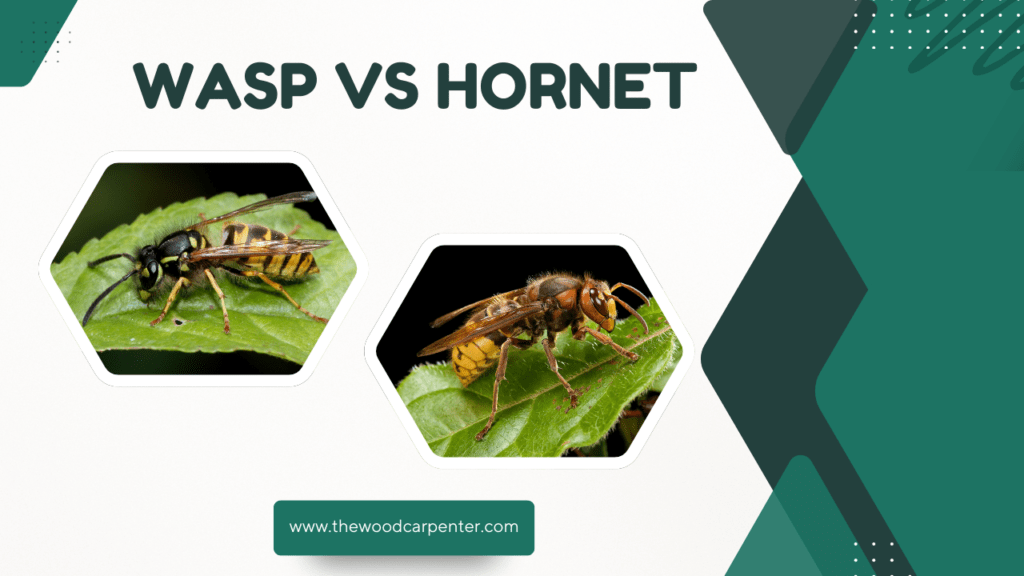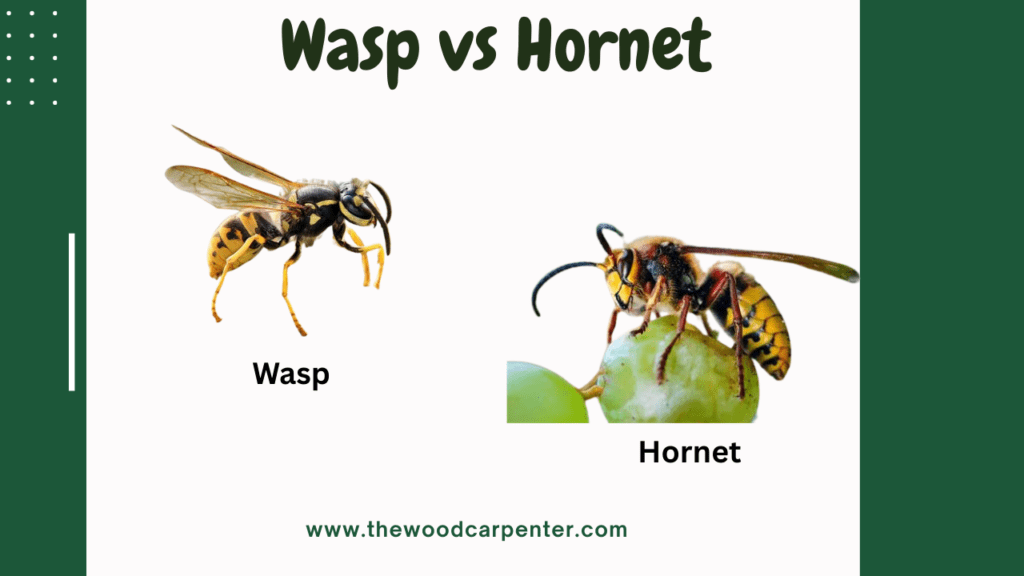
Wasps and hornets look alike and both can sting, so people often mix them up. But while all hornets are a kind of wasp, not all wasps are hornets. It’s important to know the difference so you can identify them correctly, stay safe, and understand how they help nature.
What They Are
Wasps: Wasps are insects that belong to a group called Hymenoptera. There are over 100,000 types of wasps in the world. Some live alone, and some live in groups. Common types of wasps include yellow jackets and paper wasps.
Hornets: Hornets are a special type of wasp. They mostly belong to a group called Vespa. There are about 22 known types of hornets, and all of them live in groups.
Physical Appearance
| Feature | Wasps | Hornets |
| Size | 1/4 to 1 inch (varies by species) | 1 to over 2 inches (some species up to 2.5″) |
| Body Shape | Slender, narrow waist | Robust, rounder, “fatter” midsection |
| Coloration | Bright yellow and black, sometimes red/blue | Black and white, or brownish-red |
| Head | Proportionally smaller | Wider, more prominent |
Wasps are generally more slender with a distinct narrow “waist” connecting their thorax and abdomen. Hornets appear thicker and more robust, with a rounder abdomen and larger head.
Hornets often have darker, less vivid coloring compared to the bright yellow of many wasps. Some hornets, like the bald-faced hornet, have striking black and white markings.
Behavior and Aggression
Hornets are very protective of their nests and will attack if they feel threatened. They can sting many times without dying, and their sting is very painful. Their venom has a chemical called acetylcholine, which makes the sting even worse. For people with allergies, hornet stings can be very dangerous.
Wasps can also be aggressive, especially types like yellow jackets that live in groups. However, not all wasps are aggressive—those that live alone usually only sting if they are bothered.
Diet and Ecological Role
Hornets: Hornets are hunters. They catch bigger insects like beetles, flies, and even bees to feed their young. They also eat sweet things like nectar, tree sap, and ripe fruit. Hornets don’t usually go after human food, so they don’t bother people as much in towns and cities.
Wasps: Wasps eat many different things. Some hunt small insects, while others eat leftover food, sugary drinks, and even garbage. This is why you often see them around picnics or trash cans. Wasps help by killing pests and sometimes by pollinating flowers, making them important for the environment.

Nesting Habits
| Feature | Wasps | Hornets |
| Nest Location | Eaves, pipes, sheltered areas, tree branches, underground | Higher locations: trees, shrubs, attics |
| Nest Structure | Smaller, hexagonal, 6-8 inches wide (social wasps); mud tubes (solitary) | Large, basketball-sized, enclosed, single entrance |
| Material | Chewed wood fibers and saliva (paper nests), mud | Similar paper nests, larger in size |
| Colony Size | 20-30 (social wasps), solitary species common | 100-700 workers plus queen |
Hornet nests are usually big—about the size of a basketball—and are built in high places like trees or attics. Hornets make their nests by chewing wood and mixing it with their spit, creating a papery material. Their nests usually have one entrance.
Wasp nests can be found in many places. Some, like yellow jackets, build nests underground. Wasp nests are usually smaller than hornet nests. Social wasps make paper-like nests, while solitary wasps might build small mud tubes or dig holes in the ground.
Also read:
Carpenter Ants vs Termites: Which One’s Worse?
Drywood Termites: How to Spot, Treat, and Prevent Them!
Sting Severity and Danger
Hornet Stings: They are more painful because their venom affects the nerves. For people who are allergic, a sting can be very dangerous or even deadly. Hornets can sting more than once.
Wasp Stings: Wasp stings also hurt, but usually not as much as hornet stings. Wasps can sting many times too. Some, like yellow jackets, are known to sting aggressively.
When either a wasp or hornet stings, it can release a chemical smell (called a pheromone) that warns other members of the colony. This can lead to more wasps or hornets joining in to defend the nest.
Frequently Asked Questions (FAQs)
Q1: Are hornets just big wasps?
Hornets are a specific type of wasp, generally larger and more robust, with unique behavioral and ecological traits.
Q2: Which is more dangerous, a wasp or a hornet?
Hornet stings are more painful and their venom can be more dangerous, especially to those with allergies. However, some wasps, like yellow jackets, are extremely aggressive and can also pose significant risks.
Q3: How can I tell a hornet from a wasp?
Look for size and body shape: hornets are larger, rounder, and have less vivid coloring, often with black and white markings. Wasps are generally slender with bright yellow and black stripes.
Q4: Where do wasps and hornets build their nests?
Hornets prefer elevated locations like trees and attics, building large, enclosed paper nests. Wasps may nest in sheltered areas, on buildings, or underground, with nests varying in size and structure.
Q5: What should I do if I find a nest near my home?
Do not attempt to remove it yourself, especially if you are allergic or unsure of the species. Contact a professional pest control service to safely remove the nest.
Q6: Do wasps and hornets pollinate plants?
While wasps are not as effective as bees, some species do contribute to pollination. Hornets have minimal impact on pollination due to their feeding behavior.
Q7: Why do wasps and hornets sting?
They sting primarily in defense of themselves or their nests. Social species are especially aggressive if they perceive a threat to their colony.
Knowing the difference between wasps and hornets helps you recognize them, stay safe around them, and understand why they are important in nature.
Both help control pests and can also help with pollination, but they behave differently, look different, and pose different levels of risk. These differences are important to understand.

